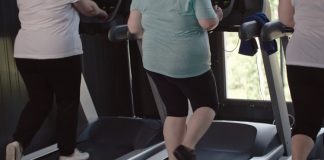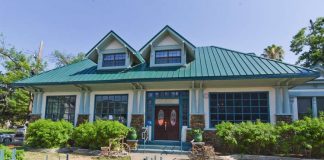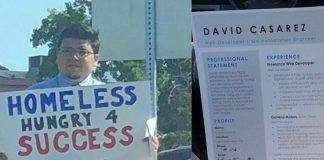Born to Run, Glory Days, Born in the U.S.A.
Advertisements:
$500 Million
"Getting an audience is hard. Sustaining an audience is hard. It demands a consistency of thought, of purpose, and of action over a long period of time."
If there's one artist alive who has claim to being called the voice of America, it may be Bruce Springsteen. Patriotic, but not afraid to air our frustrations. Embodying all our classic archetypes, both macho and sensitive, rich and famous, but fundamentally working class in spirit, larger than life but entirely human. The Boss is simply the only one of his kind.
"I have spent my life judging the distance between American reality and the American dream."
Born September 23, 1949 in Long Branch, New Jersey to bus driver "Dutch" Springsteen and legal secretary Adele Ann, Bruce Springsteen grew up Catholic, listening to Frank Sinatra on the radio and watching Elvis Presley and The Beatles on TV, developing an interest in music at age seven. In fact, Bruce was so devoted to his music that he wound up leading a fairly lonely youth, even skipping his own graduation ceremony from Freehold High School in 1967.
"For me, I was somebody who was a smart young guy who didn't do very well in school. The basic system of education, I didn't fit in; my intelligence was elsewhere."
Over the next several years Bruce Springsteen would play around New Jersey and New York City with a number of bands at any venue that would have him, playing in groups including The Castiles, Earth, Steel Mill, Dr. Zoom & The Sonic Boom, the Sundance Blues Band and The Bruce Springsteen Band. Chances are you've never heard of any of these acts. This was a time of exploration for Bruce Springsteen as he struggled to develop a sound that was unique, personal, and radio-friendly.
"A good song takes on more meaning as the years pass by."
Finally he would meet his new managers, Mike Appel and Jim Cretecos, who would introduce him to John Hammond, a talent scout from Columbia Records. Impressed with Bruce's songwriting, Hammond would help Springsteen to secure a recording contract, leading to his debut album Greetings from Asbury Park, N.J. (1972). The musicians playing on this album would go on to become none other than the famous E. Street Band.
Although the album would be a favorite among critic, it lacked a truly punchy radio single, and the comparisons to Bob Dylan for the free-associative lyrics on songs like "Blinded by the Light" (1972), though flattering, served to bury the young talent as a mere clone of the far more famous folk singer. While Bruce had his foot in the door, he still needed to develop a unique and attention-grabbing image of his own in order to get out of the shadow of his predecessors.
Born to Run
In August of 1975, Springsteen and the E Street Band had a landmark ten-show stand at The Bottom Line Club in New York, with Rolling Stone magazine calling it one of the fifty moments that changed Rock and Roll, but in order to really take their place as rock royalty, they needed a smash-hit. And they had that smash-hit with the release of Born to Run (1975).
The album was a smash-hit, at least. The singles were only modest successes, by and large. The title track, with its explosive horns and celestial guitar stings, became a classic, but at the time only reached the twenty-third spot on the Billboard 200. But the album itself shot right up to number 3, and respectable airplay for "Tenth Avenue Freeze-Out," "Thunder Road" and "Jungleland" helped the album to hold its ground as a defining record of the decade.
Just as Springsteen's career was really taking off, it threatened to be derailed by a legal battle with Mike Appel, Bruce's former manager. There's a silver lining to this, however, as Springsteen was forced to take the E Street Band on the road in order to keep the gang together, evolving into arguably the greatest live act in Rock and Roll history during the year that Springsteen was unable to record new material. The tour would ultimately result in Darkness on the Edge of Town (1978), a somber, melancholy album showing off a more poetic side to Bruce's lyricism.
Extensive touring and a number of landmark albums would follow, including Nebraska (1982), a stripped down album recorded entirely on a four-track tape deck in Bruce's own home. Initially produced as a demo tape, producer Jon Landau suggested releasing it as-is, resulting in a beautifully stark, haunting release.
By the mid-90s, Bruce would lean fully into his All American image with Born in the U.S.A. (1984), by far his most commercial, radio-friendly album yet, selling fifteen million copies in the US and thirty million worldwide. With big, booming radio-rock instrumentals and subversively critical lyrics, the album would be something like the Great American Novel in the form of a rock and roll record. This stage of Bruce's career would prove to be his most commercially successful, leading to Bruce turning down offers from companies like Chrysler, who'd hoped to feature his music in their TV ads.
Unfortunately, this new level of success would come with the risk of alienating his existing fanbase, especially with the artist dissolving the E Street Band in 1989 and moving to California with new wife, Patti Scialfa. He would attempt to make up the difference with the quiet, introspective albums Human Touch (1992) and Lucky Town (1992), showing that he hadn't lost his edge as a lyricist, but throughout much of the 1990s, Bruce's new material was met to underwhelming reception.
The key to Springsteen's comeback was pretty obvious in retrospect: Get the band back together. And he did just that in 1999, staging a massively successful reunion tour with the E Street Band, running for more than a year and selling out Madison Square Garden. In 2002 the band recorded The Rising (2002), the first album to feature the entire group in nearly twenty years.
"Think of it this way: performing is like sprinting while screaming for three, four minutes. And then you do it again. And then you do it again. And then you walk a little, shouting the whole time. And so on. Your adrenaline quickly overwhelms your conditioning."
Since the reunion, Springsteen has continued to record and tour with and without the E Street Band. The solo record Devils & Dust (2005), a sort of spiritual-follow-up to Nebraska, hit number one in the US and nine other countries, while Magic (2007), recorded with the band, was a more modest success, but not without its accolades, reaching the top spot in Ireland.
While Springsteen has had his ups and downs in the music business, he is a rare artist who has remained true to his principles and to his own voice, continuing to explore new horizons without losing sight of what made him a star in the first place.
"This music is forever for me. It's the stage thing, that rush moment that you live for. It never lasts, but that's what you live for."
->





